Here we present to you our choices for 7 Extraordinary Types of Ant. Now, to be certain, these particular species barely scratch the surface of the more than 12,500 recognized species around the world. Furthermore, experts estimate that perhaps as many as another 10,000 species remain unrecognized. However, some naturally stand out from the rest for one reason or another. We hope you enjoy reading about our choices to represent a few of these outstanding representatives of the Hymenoptera Order.
Bullet Ant
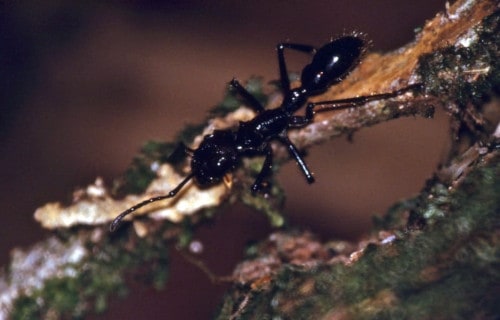
CCL: https://bit.ly/1jxQJMa
Bullet Ant Facts
- Heading off our list 7 Extraordinary Types of Ant comes the uniquely, yet appropriately named species known as the Bullet Ant.
- This impressive invertebrate constitutes a rather remarkable species, commonly popular as the lesser giant hunting ant or conga ant.
- Further, its name, unfortunately, derives from reports concerning its rather powerful and quite potent sting.
- Interestingly, among the local inhabitants of its native range, the insect’s name also remains hormiga veinticuatro.
- Translated, this means 24-hour ant, which refers to the 24 hours of rather extreme pain that generally follow a sting.
- Finally, the species epithet clavata also means club-shaped.

CCL: https://bit.ly/1jxQJMa
Bullet Ant Physical Description
The powerful Bullet Ant ranks as a rather large variety of ant, like many of its related species. Workers also average around 0.7-1.3 in (18–30 mm) in length.
In appearance, these comparatively small, yet extremely powerful, invertebrates strongly resemble reddish-black, wingless wasps, with its coloring.
It also remains best known, in terms of physical appearance, at least, for its large, powerful pincers. With these, it easily defends itself and rends its prey.
- Kingdom: Animalia
- Phylum: Arthropoda
- Class: Insecta
- Order: Hymenoptera
- Family: Formicidae
- Genus: Paraponera
- Species: P. clavata

CCL: https://bit.ly/1jxQJMa
Bullet Ant Distribution, Habitat, and Ecology
Firstly, the fascinating Bullet Ant also evolved completely endemic to lowland rainforests and currently exists in a range from Nicaragua to the extreme east of the Honduras, and south to Paraguay, in South America.
Further, the insect appears to be fully predatory in nature. Just like other species of ants, it does not display any apparent degree of polymorphism within the worker caste. The queen also grows only slightly larger than the workers themselves.
Most notably, the extreme pain of the sting of this insect is generally considered to be greater than that of any other species of known insect. The pain is above that of even the tarantula hawk wasp whose name derives from the comparison of the pain to being shot with a bullet.
Most notably, the sting causes excruciating pain that continues unabated for up to 24 hours. The Bullet Ant has also apparently evolved its sting to ward off any predators that would normally prey upon them.
Finally, the powerful toxin is also currently under investigation for possible medical applications.
Fire Ant
Fire Ant Facts
- Coming second on our list of 7 Extraordinary Types of Ant comes the well-known and often greatly feared species known as the Fire Ant.
- Firstly, the term serves as the common name for several species of ants in the genus Solenopsis, all of which sting.
- Furthermore, these tiny but surprisingly powerful and dangerous invertebrates often attack small animals and can kill them.
- Most notably, other species of ant just bite and then spray acid on the wound. However, these ants bite only to get a grip and then sting.
- In addition, after biting, the insect then injects a toxic alkaloid venom called solenopsin, causing an extreme burning sensation, hence the name.
Fire Ant Physical Description
Firstly, given that the term Fire Ant applies to several related species, physical characteristics vary somewhat between the different species.
Furthermore, even within the same species, physical differences exist between the three different castes existing within the colony.
In the coloring of the invertebrate, all castes tend to have a copperish-brown head and body, along with a rather darker abdomen.
However, the workers tend to display darker shades and vary in length from a truly diminutive 0.08 – 0.24 in (2 – 6 mm).
- Kingdom: Animalia
- Phylum: Euarthropoda
- Class: Insecta
- Order: Hymenoptera
- Family: Formicidae
- Genus: Solenopsis
Fire Ant Distribution, Habitat, and Ecology
Although the various forms of Fire Ant evolved as native to regions of South America, many have now spread
In countries such as the United States, in North America, Australia, Taiwan, and China, the animal now constitutes a dangerous invasive species.
Firstly, small groups of queens or single queens found colonies. Further, even if only one queen survives, within a month or so, the colony can expand to thousands of individuals.
In addition, the typical Fire Ant colony produces large mounds in open areas, where individuals primarily feed on young plants, seeds and sometimes crickets.
These ants also tend to be more aggressive than most indigenous species, thus they have pushed many species out, even possibly into extinction.
Finally, the queens may live as long as 6-7 years. During their lifetimes, these can produce up to 3,500 eggs per day.
That adds up to roughly 9 million eggs produced during a single queen’s lifetime.
Giant Forest Ant
Giant Forest Ant Facts
- This magnificent creation of Nature typically goes by the appropriate name of the Giant Forest Ant, for reasons you will soon discover. Unlike many of the countless species from around the world, for the moment the insect has no other common name.
- Professional researchers, meanwhile, generally refer to the remarkable creature by another term. That’s because those professionals usually apply its formal scientific name. That, however, is the less than easily pronounced term of Dinomyrmex gigas.
- The invertebrate received that official name at the hands of the renowned French zoologist, Pierre Andre Latreille. This respected researche made the first recorded acknowledgement of it as a separate and distinct species. That action occurred in 1802.
- Regardless of which term one chooses to employ when referrring to it, though, it stands out from the majority of its kin. It also represents the only known member of its genus, further distinguishing it. One known subspecies does appear to exist, however.
- The Giant Forest Ant appears to be maintaining a population base that’s both stable and sizeable. That condition further seems to hold true throughout the entirety of its native range. The IUCN, therefore, currently has no listing for it on its Red List.
- This majestic arthropod nevertheless must be considered to be facing at least some threats, like most species. These naturally include the potential danger of habitat loss. Its greatest threat, however, most likely consists of the ongoing peril of climate change.
Giant Forest Ant Physical Description
The amazing Giant Forest Ant impresses those whoe encounter if for various reasons, of course. Likely its most impressive feature, however, is its sheer size. That’s due to the fact that this particular variety of ant ranks as one of the largest in the entire world.
It further qualifies as the largest of all known ants in its region of the world. Sizes vary between individuals, of course, due to the very nature of ants. That’s because members of different castes have different attributes. That statistic extends to sheer size as well.
Normal workers within each colony attain an average overall length measuring an impressive 0.82 in (20.9 mm). The significantly larger soldiers of each colony, however, grow much larger. Members of that caste attain an average length of roughly 1.11 in (28.1 mm).
The queens, meanwhile, reach even greater sizes, as holds true for most known ants. Each queen of this remarkable invertebrate grows to about 1.22 in (31 mm) in overall length. These measurements truly drive home the incredible size of these invertebrates!
The physical appearance of the Giant Forest Ant, apart from its size, strongly parallels other ants. It does manifest bright yellow fur on its legs, unlike others. The main body shows a dark brown shade, yet the posterior displays a much lighter, reddish-brown hue.
- Kingdom: Animalia
- Phylum: Arthropoda
- Class: Insecta
- Order: Hymenoptera
- Family: Formicidae
- Genus: Dinomyrmex
- Species: D. gigas
Giant Forest Ant Distribution, Habitat, and Ecology
The marvelous Giant Forest Ant appears to inhabit a moderately large swathe of the globe. More specifically, the arthropod inhabits much of the southeastern portions of the continent of Asia. It’s still unclear, however, if the arthropod ever possessed a greater range.
The northern-most region of its range includes the countries of Thailand and the Philippines, though separated by a large area of ocean. From there, though, it extends its range through parts of Malaysia and Borneo, and into much of the country of Indonesia.
In all regions that it inhabits, however, the invertebrate displays strong preferences in its choice of ecosystems to dwell in. Primarily, the insect makes its home, as the name implies, in the relatively dense regions of rainforest found throughout this region of the world.
Yet this intrepid product of millions of years of evolution also appears, though, in smaller concentrations, in a few other types of habitat. These varying habitats might surprise, many, as they include such diverse areas as regions of mangrove forest, and peat swamps.
The extraordinary creature also lives at a wide range of altitudes, unlike some related species. In point of fact, it makes appearances from near sea level to (1,500 m) above sea level. There, the animal sometimes makes its home in regions of montane forest.
The impressive Giant Forest Ant also differs from many of its relatives in its behavioral patterns. Most ants forage primarily by day, but not this one. These productive ants conduct the great majority of the their activities at night, including, of course, foraging.
The vast majority of the diet of this ant, an impressive 90 percent, consists of honeydew. The remainder includes small insects, such as winged termites. The animal also consumes smaller quantities of such food as nectar, sap, and even quantities of bird droppings.
Gigantiops Destructor
Gigantiops Destructor Facts
- Listing as fourth on our list of 7 Extraordinary Types of Ant comes the rather impressively named Gigantiops Destructor.
- Firstly, this uniquely named insect represents the sole member of its genus. With a name like that, you would think one is enough.
- The common name forms a somewhat deceptive sobriquet, however. Although its behavior is most unusual for a eusocial species, this insect remains of overall average size.
- However, only the eyes of the Gigantiops Destructor grow unusually large. Most notably, it possesses the largest eyes, relative to body size, of any known species of ant.
Gigantiops Destructor Physical Description
Due to the somewhat outrageous name, many expect the Gigantiops Destructor to tower over related species in terms of sheer physical size.
However, despite the name researchers gave it, this invertebrate appears similar to other ant species of its type in overall size, except for its eyes.
The exceptionally large eyes, however, set this particular species apart, and provide it with excellent vision of approaching predators.
Additionally, the legs of this remarkable insect evolved as incredibly powerful, even in relation to other jumping ants.
- Kingdom: Animalia
- Phylum: Arthropoda
- Class: Insecta
- Order: Hymenoptera
- Family: Formicidae
- Genus: Gigantiops
- Species: G. destructor
Gigantiops Destructor Distribution, Habitat, and Ecology
Most notably, to date, the only known habitat of the Gigantiops Destructor consists of the Amazon region of South America.
In that region, the rather powerful insect makes its nests in various locations, including soil, rotted wood, or even abandoned animal dens.
This insect has also evolved a resourceful and innovative defensive strategy of building its nests in close proximity to the dreaded Bullet Ant.
In addition, this species preys primarily on a variety of small arthropods. Rather surprisingly, in a pattern that appears unique among eusocial insects, individual members do not cooperate in hunting or feeding habits.
Despite its rather fearsome name, the Gigantiops Destructor generally uses its incredible leaping ability to flee at the sight of humans or potential threats.
Driver Ant

CCL: https://bit.ly/1jxQJMa
Driver Ant Facts
- Next, on this list of 7 Extraordinary Types of
Ant we present the infamous insect many people fear, the Driver Ant. - Firstly, its common name serves as the name of a rather extensive genus of army ants. Further, the majority of the species of this genus reside in extremely arid regions.
- Unlike the majority of ants, however, it does not reside in permanent ant hills. It does form them, but these structures typically get used for three months at most, usually far less
. Also , each colony often contains in excess of 20 million individuals. It remains fully capable of stinging but rarely does so because it usually relies on its incredibly powerful jaws to defend itself.
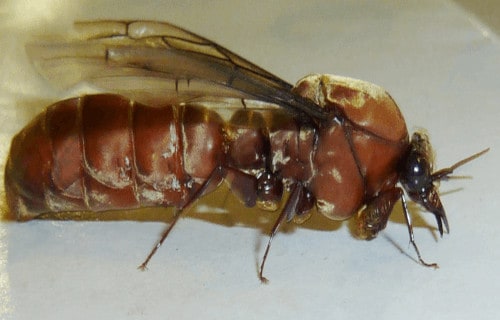
CCL: https://bit.ly/1p2b8Ke
Driver Ant Physical Description
Given that the term Driver Ant applies to multiple species, physical variations quite naturally occur among the various types.
However, certain attributes remain consistent overall. Firstly, the majority of them present combinations of dark reddish-brown shades.
Also, members of the soldier class grow to a significantly larger size, develop much larger heads, and powerful mandibles.
- Kingdom: Animalia
- Phylum: Arthropoda
- Class: Insecta
- Order: Hymenoptera
- Family: Formicidae
- Genus: Dorylus

CCL: http://bit.ly/2xLZ0ap
Driver Ant Distribution, Habitat, and Ecology
The various forms of Driver Ant inhabit different areas, yet the greatest percentage of these inhabit either eastern or central Africa.
However, in smaller numbers, this powerful and often dangerous insect also occurs throughout a range extending to tropical portions of Asia.
The impressive Driver Ant also remains well-known for the enormous marching columns it sometimes forms. This occurs seasonally when food supplies begin to dwindle.
In addition, these enormous columns occasionally contain as many as 50 million individuals. Though these columns remain extremely dangerous, one can easily avoid them because the column progresses at no more than 65 ft (20 m) per hour.
The ants will also fiercely defend the column against an attacker of any size. The bite has incredible power and generates great pain. Once it bites, it will not release, even if torn in two.
Yet interestingly, local indigenous peoples often use a Driver Ant as a natural suture, getting the ant to bite on both sides of a wound. The body then gets torn off, leaving the jaws holding the wound closed. This will actually hold for several days, allowing the wound to begin to heal.
Rasberry Crazy Ant
Rasberry Crazy Ant Facts
- The sixth remarkable entry on our list of 7 Extraordinary Types of Ant is the distinctively named Rasberry Crazy Ant.
- Firstly, the common name of this invertebrate names a highly invasive and destructive species of ant native to a tropical environment.
- Also popular as the tawny crazy ant or Nylanderia fulva, this incredible species, unlike most others, has multiple queens in a single nest.
- In addition, this invertebrate appears to displace other ant species, even the dreaded fire ant, given its tendency to reproduce in vast numbers.
- Finally, in the United States, this particular ant is considered an invasive species of insect, with the heaviest infestation occurring in the state of Texas.
Rasberry Crazy Ant Physical Description
Firstly, the Rasberry Crazy Ant, despite its fearsome reputation and destructive tendencies, remains a rather diminutive variety of ant.
In fact, the average individual only grows to about 0.125 in (3.2 mm) in length, making it somewhat smaller than competing species.
In coloring, this tiny but quite impressive insect also resembles many related species, being primarily shades of red and dark brown.
Finally, the majority of its body also develops a covering of small, reddish-brown hairs, which aid in camouflage.
- Kingdom: Animalia
- Phylum: Euarthropoda
- Class: Insecta
- Order: Hymenoptera
- Family: Formicidae
- Genus: Nylanderia
- Species: N. fulva
Rasberry Crazy Ant Distribution, Habitat, and Ecology
Although the Rasberry Crazy Ant now inhabits a wide range of the world, the remarkable invertebrate evolved as native to portions of South America.
Rather uniquely among related species, this particular insect does not normally construct a nest, preferring another approach.
Most commonly, the insect chooses to establish its massive colonies under large stones or piles of whatever debris it finds convenient.
Most notably, it actually tends aphids for the sugar-rich liquid these secrete, as well as consuming small vertebrates, insects, and plants.
Finally, this astounding creature has a strange and unexplained affinity for electrical equipment, often causing great damage
Bulldog Ant
Bulldog Ant Facts
- Last, but certainly not least, on our list of 7 Extraordinary Types of Ant is the truly impressive, and aptly
named, Bulldog Ant. - Firstly, the term serves as the collective name applied to a genus of roughly 90 species of ants, inhabiting various parts of the world.
- This rather fascinating genus derives its name from its reputation for aggressiveness and unparalleled instinctive tenacity.
- This occurs partly due to the fact that if this insect gets torn in half, the head and body survive for up to 30 minutes.
- Furthermore, during this time, the two halves of the insect will automatically engage in battle, literally fighting with itself.
- Finally, during this battle, the head will grasp the rear half with its pincers, while the rear half repeatedly stings the head fiercely.
Bulldog Ant Physical Description
Since the term Bulldog Ant applies to numerous separate species within a single genus, physical appearance naturally varies somewhat.
However, certain physical characteristics do remain consistent between the different types of ant known by this common name.
Firstly, individuals of the various representative species range in size from as small as 0.6 in (1.5 cm) to as large as 1.6 in (4.1 cm) in length.
For the majority of the genus, coloring remains rather variable. However, this most commonly consists of combined shades of red and black.
- Kingdom: Animalia
- Phylum: Euarthropoda
- Class: Insecta
- Order: Hymenoptera
- Family: Formicidae
- Genus: Myrmecia
Bulldog Ant Distribution, Habitat, and Ecology
Perhaps most notably, all but one species of Bulldog Ant evolved as endemic to Australia. The lone exception, however, evolved as native to New Caledonia.
Also, given that the genus includes so many species, habitat preferences quite naturally vary, sometimes significantly.
However, in terms of nesting choices, most of these invertebrates prefer to construct a nest in either soil rotten wood, or even under larger rocks.
In addition, the adult Bulldog Ant feeds on a variety of sources but primarily consumes honeydew, fruit, seeds, gums, fungi, and nectar.
The larvae remain entirely carnivorous, however. Most notably, these eat small insects that the adult workers bring to them in the colony.
Throughout Australia, the Bulldog Ant also remains well-known both for its extreme aggressiveness and the results of its quite powerful sting.
Finally, this insect remains one of the few known species of ants which has female workers. These are capable of reproduction if the queen should be killed.
We hope that you have enjoyed this listing of 7 Extraordinary Types of Ant. These remarkable insects exist natively in virtually every part of the globe, excepting only Antarctica and a few islands. Wherever the various species live, each generally plays a vital role in the local ecology. Sadly, however, many of them find themselves threatened with extinction, due to such factors as climate change and habitat loss.
Check out our other articles on Earth’s Extremely Threatened Flowers, 6 Mysterious Natural Phenomena, Global Warming: Undeniable




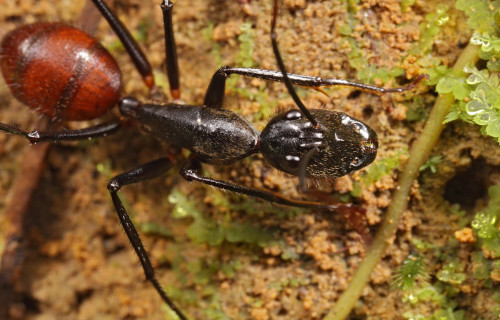



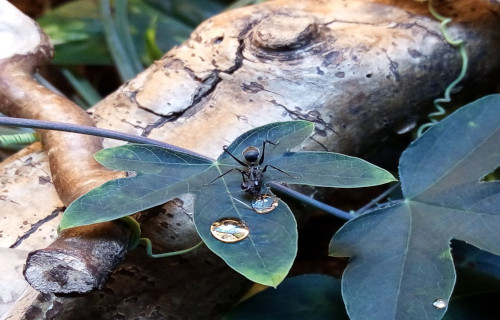

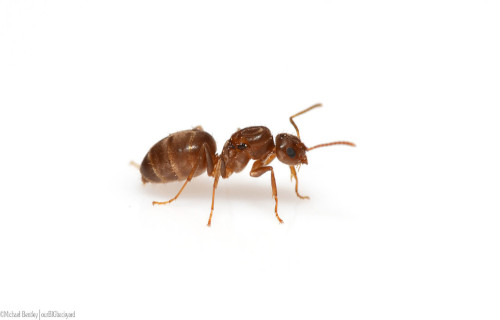












Leave a Reply